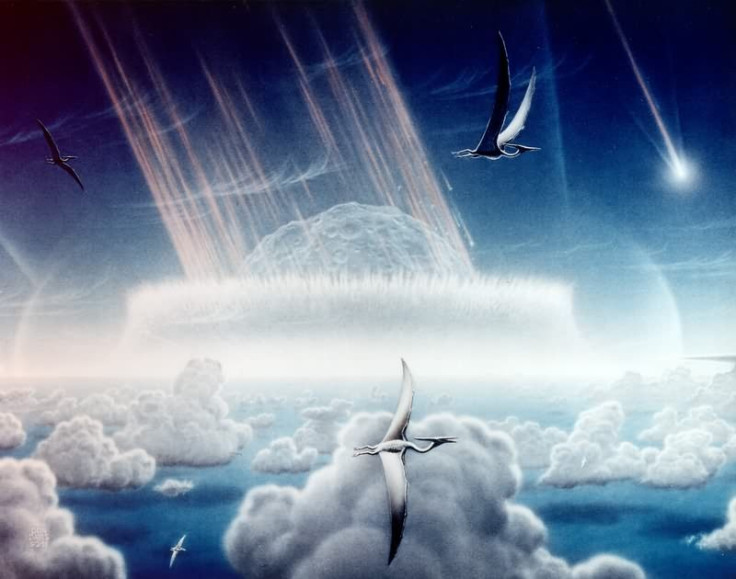Dinosaur-Killing Asteroid Made Rocks Behave Like Liquid, Study Reveals

About 66 million years ago, a roughly 10-mile-wide asteroid smashed into Earth — a catastrophe that precipitated a chain of events that may have wiped dinosaurs off the face of the planet. The scar that this impact left behind is now known as the Chicxulub crater, and is located just off Mexico’s Yucatan Peninsula.
This point of impact, which is now buried under ocean sediments in the Gulf of Mexico, is surrounded by a ring of mountains — known as “peak rings” — whose origin and formation has long remained a mystery.
Now, in a study published Friday in the journal Science, a team of researchers have finally reconstructed, in unprecedented detail, how the asteroid that killed the dinosaurs created the 100-mile-wide crater. The research, based on the findings from an expedition that drilled into the peak ring of the Chicxulub crater in the Gulf of Mexico earlier this year, validates the theory that cataclysmic asteroid impacts cause a planet’s surface to behave like a fluid.
“Chicxulub is the only crater on Earth with an intact peak ring that we can go sample, the next intact peak ring would be on the moon,” study co-author Sean P. S. Gulick, a marine geophysicist from the University of Texas at Austin, told the New York Times. “It’s ground zero of the Cretaceous extinction event.”
According to the “dynamic collapse model” detailed in the study, the asteroid, which is believed to have impacted Earth with the force of 100 million atomic bombs, quickly opened a massive hole nearly 19 miles deep and 120 miles wide. Once this happened, the rocks that were pushed downward by the force of the impact rebounded, eventually collapsing down to the surface to create the peak rings.
“If this deep-rebound model is correct, then our peak ring rocks should be the rocks that have travelled farthest in the impact — first, outwards by kilometres, then up in the air by over 10km, and back down and outwards by another, say, 10km. So their total travel path is something like 30km, and they do that in under 10 minutes,” Gulick told the BBC.
This means that the material that made the peak rings in the crater came from rocks that were once deep within Earth’s crust. The researchers believe that this model can also explain the structure of craters observed on the moon, Mercury and Venus.
“It is the same exact kind of feature that we see on all large impacts on rocky planets, whether it be on Venus, on Mercury or on the moon,” Gulick said in a statement. “They’re a ubiquitous feature. Yet, prior to this drilling, we did not know how they were formed or what they were made of. What you’re actually seeing is a window into the crust kilometers down.”
© Copyright IBTimes 2024. All rights reserved.






















